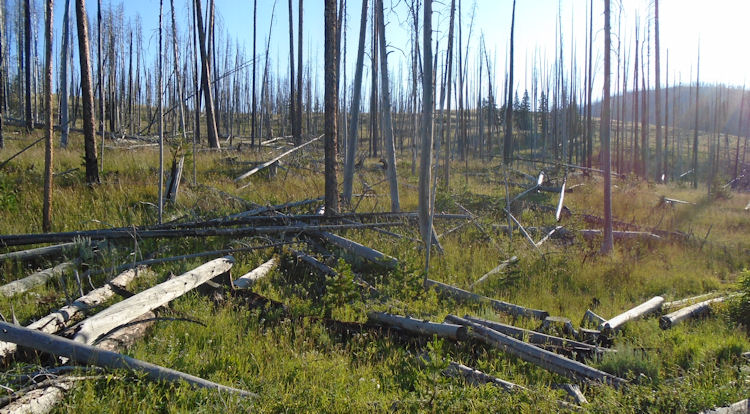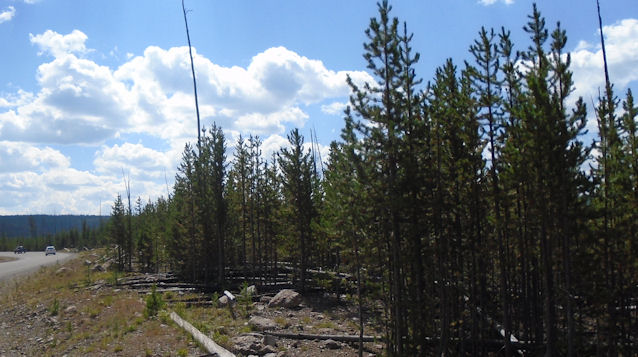
Yellowstone is the oldest of the national parks, founded in 1872. We drove in from the East Entrance. The area was burned in 2003 and is just recovering now. I guess it was a very hot and extensive fire. In Virginia, my loblolly pines planted in 2003 are big and robust. Things grow slower in the cooler mountain air in Yellowstone. They did not replant, depending on natural regeneration and I think there was a problem with seed source. I asked the rangers I met about the land, but I don’t think they really had all the information. If anybody knows more, I would appreciate the comments. You can see my loblolly in Virginia below. The land was clear cut in 2003.

Below is a Yellowstone forest that was burned in 1988. It is coming back thick. If we were managing this land for forestry, we would have replanted and thinned by now twice.

Of course, goals are different. As I wrote in an earlier post, we have a different – more complex and nuanced view of natural succession. When I learned ecology in the 1970s, we sort of believed that the forest was the goal. We would determine the “highest use” and judge anything not up to that as deficient. We now understand that every stage is similarly valuable. A burned (or cut) forests becomes a meadow, then a young forest, middle forest and maybe an old growth if it is around long enough. All the stages are attractive. There is no finish line. In a park like Yellowstone, they have time and are managing with nature. This means letting things sometimes burn.
